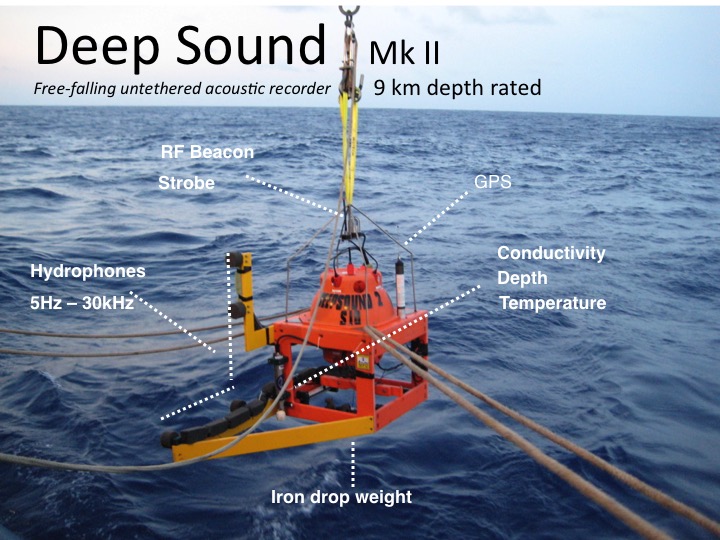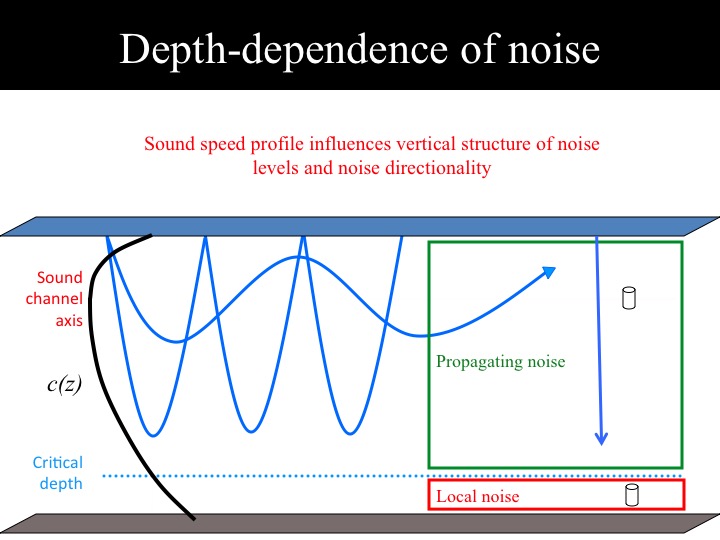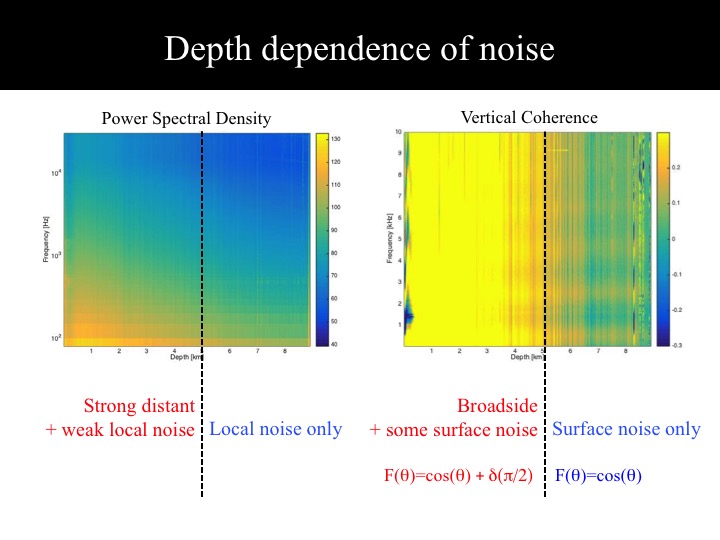Autonomous depth-profiling acoustic recorders are being designed and developed at Dalhousie to make oceanographic and ambient noise recordings in the deepest and most remote regions of the world's oceans. Previous versions of these instruments were built in Dr. Buckingham's lab at the Scripps Institution of Oceanography, and have successfully made recordings in the Mariana Trench (9km), Tonga Trench (8.5km), and Philippine Sea (6km). The current goal is to land an instrument on the bottom of the Challenger Deep (~10.9km).

Photograph of Deep Sound Mk II during deployment over the Mariana Trench

Typical deep ocean sound speed profile shows the sound channel axis and reciprocal depth, as well the mixing and separation of local and distant noise sources.

Power spectral density and vertical coherence from the Challenger Deep, Mariana Trench showing the depth partition of locally and distantly generated noise.